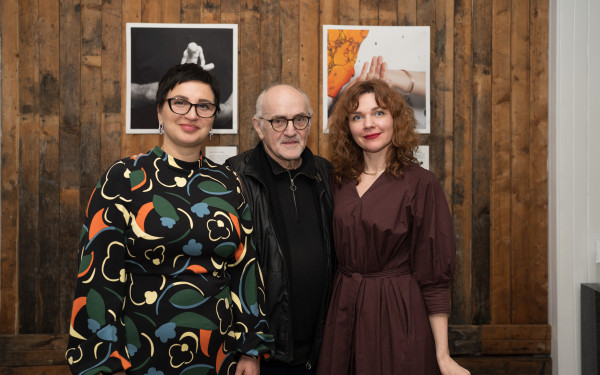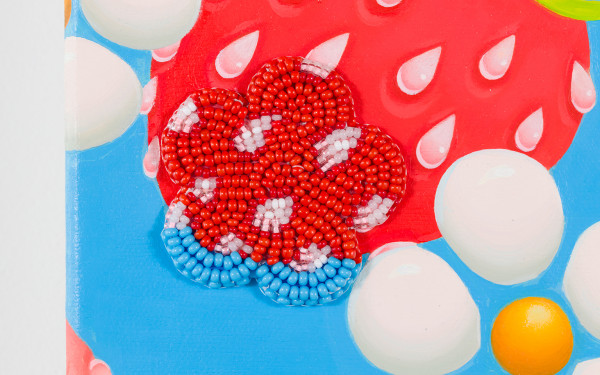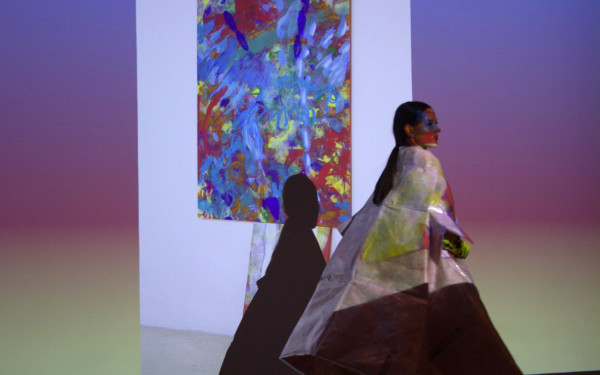Our Ways: Peel trail installation receives new additions
June 3 launch marks completion of 21 sculpture trail celebrating Indigenous history of Tiohtià:ke/Montreal
The City of Montreal launched a new addition to a public art installation on June 3 as part of its ongoing long-term strategy for reconciliation with Indigenous Peoples. The launch followed the installation’s first release in June 2023.
The trail, called “Tsi niion kwarihò:ten” in Kanien’kehá:ka or “Our Ways: Peel Trail,” is composed of 11 stations running along Peel Street from the Lachine Canal up to the base of Mount Royal Park.
The event was the culmination of about eight years of work to set up all 21 spherical sculptures, said MC Snow, a Kanien’kehá:ka visual artist featured in the exhibition.
“It’s about time we all know a little bit of our history,” said Snow. “There’s not a lot of art or anything like that related to who was there before the city.”
The sculptures were inspired by the Kanien’kehá:ka ceremony of thanks (Ohén:ton Karihwatéhkwen), which translates to “Words Before All Else.” The installation also includes an audio component accessible through the application Portrait Sonore, featuring different recordings at each station available in both English and French. The clips include various Indigenous and non-Indigenous artists and historians discussing Indigenous legends. They also compare Indigenous and European settlers’ knowledge systems in areas such as botany, human anatomy and navigation. The clips are blended with music to provide a historical account of Tiohtià:ke/Montreal since European colonization.
Archaeological work on Peel Street from 2016 to 2019 unearthed the remains of a 14th-century Iroquoian village. This discovery was the catalyst for Our Ways, with one piece of pottery even inspiring the cast iron tree guards.
The spheres were a collaboration between Snow and non-Indigenous artist Kyra Revenko. They were designed to foster dialogue between Indigenous and non-Indigenous peoples.
“It’s about dialoguing between the Indigenous nations that still live here and the nations that came after, and that we all share the island of Tiohtià:ke (Montreal) with,” Snow said.
The installation’s urban planning and design teams, members of the Kahnawà:ke band council and historians joined the inauguration, alongside visual artists and city council members who contributed to the project.
Chief Ross Montour from the Mohawk Council of Kahnawà:ke spoke at the launch, and a recording of the late Chief Christine Zachary Deom, who passed away in February, was also played. In 2017, Deom was presented with a key to the city—a distinction given to individuals who have contributed to the good of Montreal—for her work designing the new City of Montreal flag.
Industrial engineer Christian Sanchez was excited to learn about the installation, which has its first two stations just across the street from his condo building.
“This idea is magnificent," he said. Sanchez said he plans to return to show his girlfriend the spheres and incorporate the trail into his running route.
Like Sanchez, Leilani Shaw lives in Griffintown just steps away from the trail. Shaw is the executive director of the Montreal Indigenous Community Network, a Kanien’kehá:ka artist who was mentored by Snow when she was a teenager and has since been featured alongside him in a 2023 Segal Centre exhibition.
“I would love to see a lot more work moving forward, a lot more work by Indigenous artists,” said Shaw. “Montreal has a deeper history than post-colonization.”


_600_832_s.png)



_600_375_90_s_c1.JPG)
